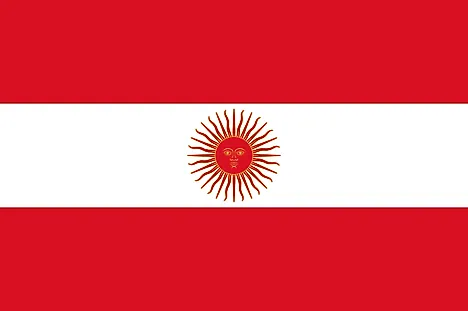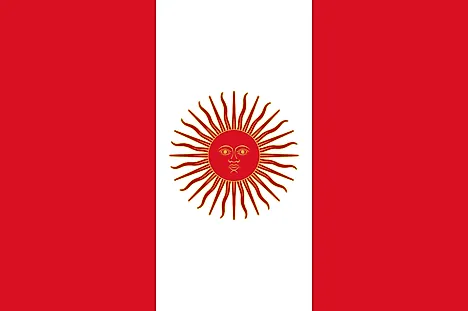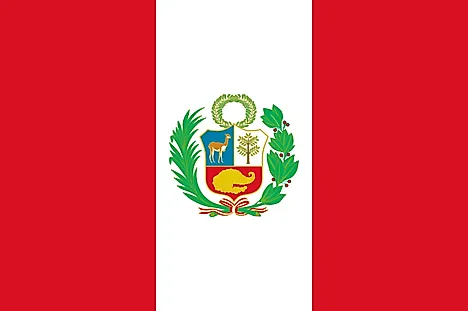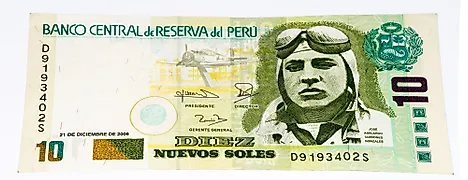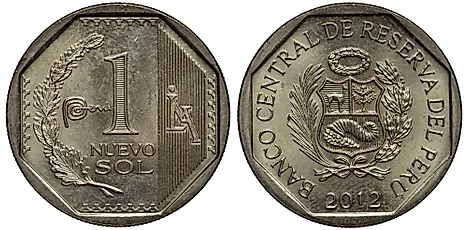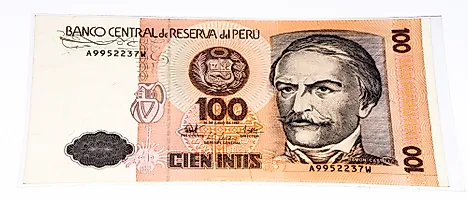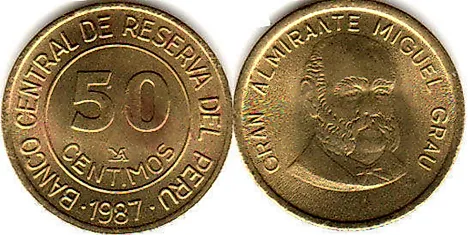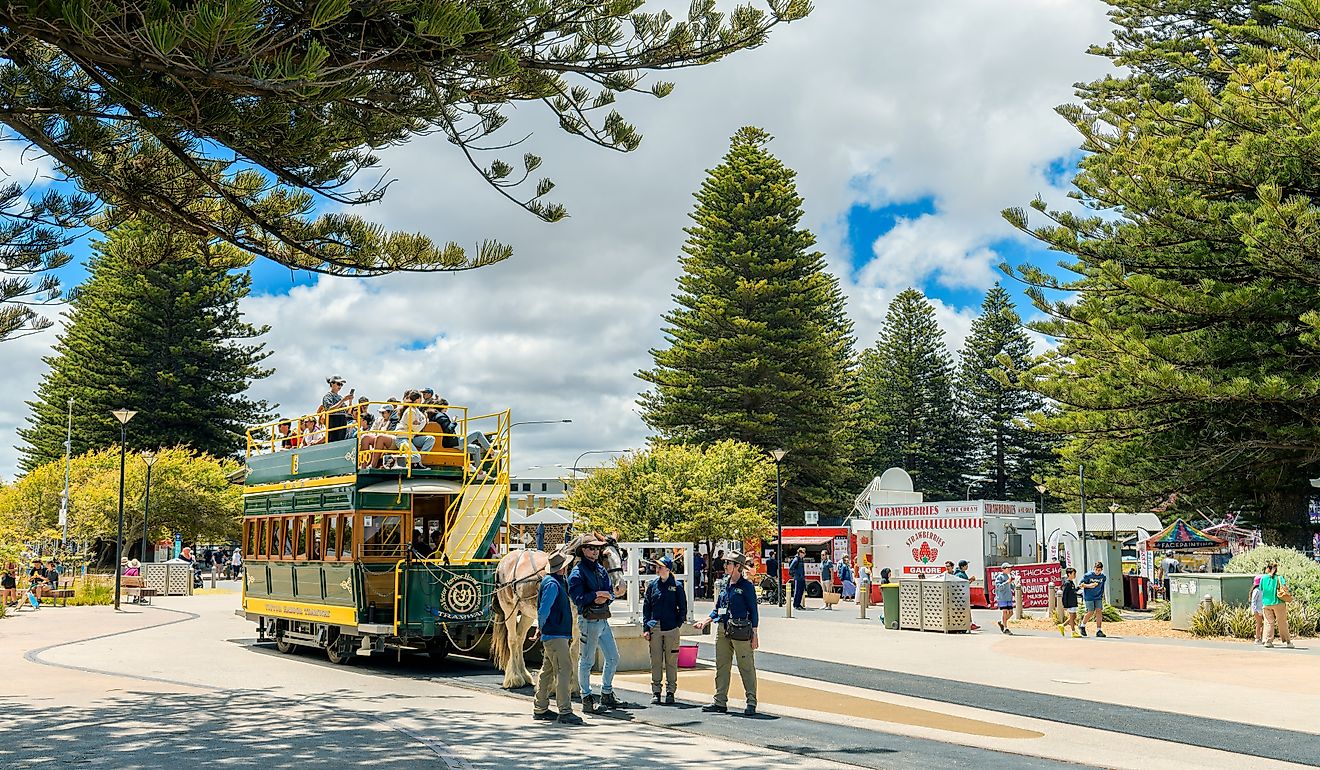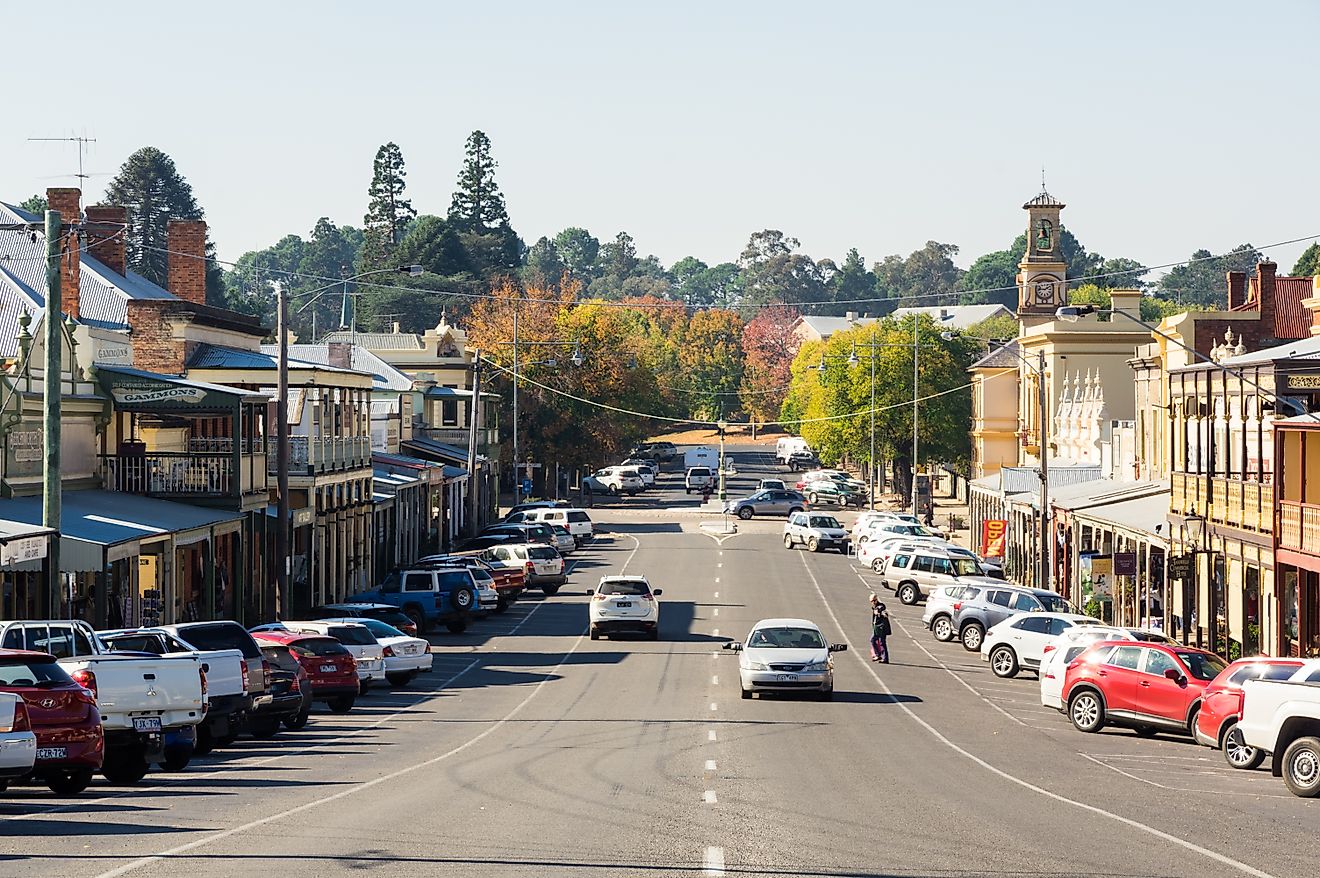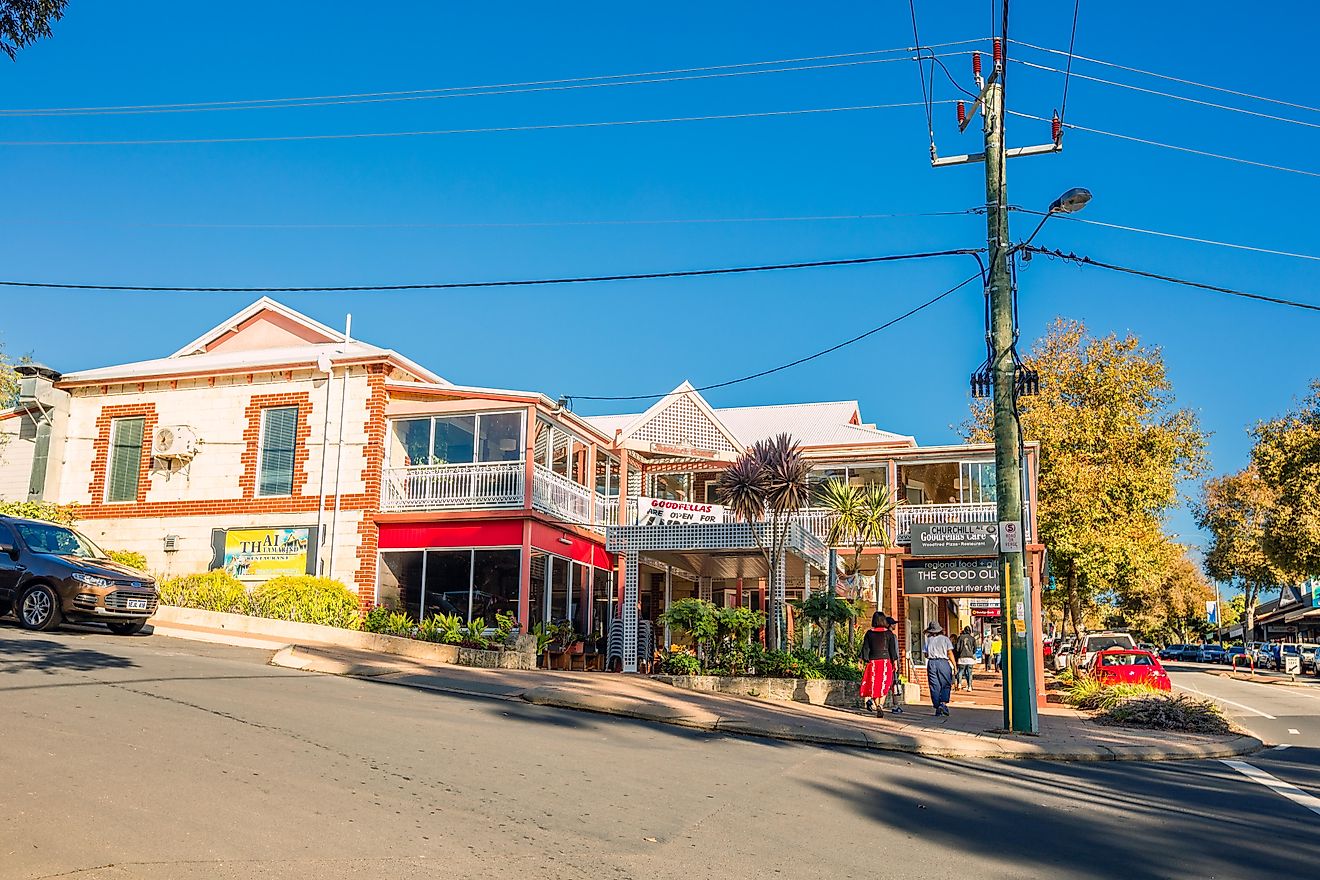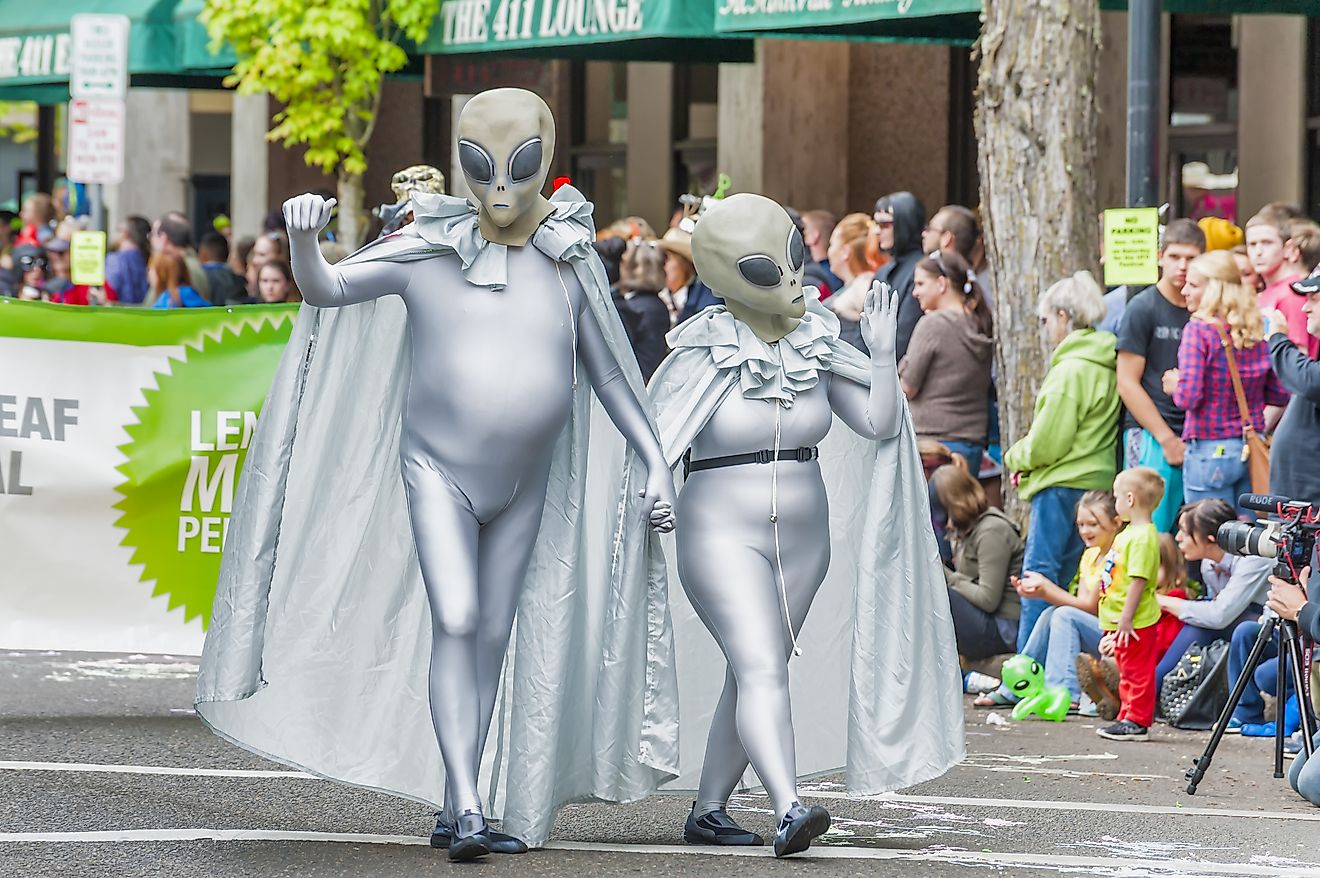Flags, Symbols, & Currencies of Peru
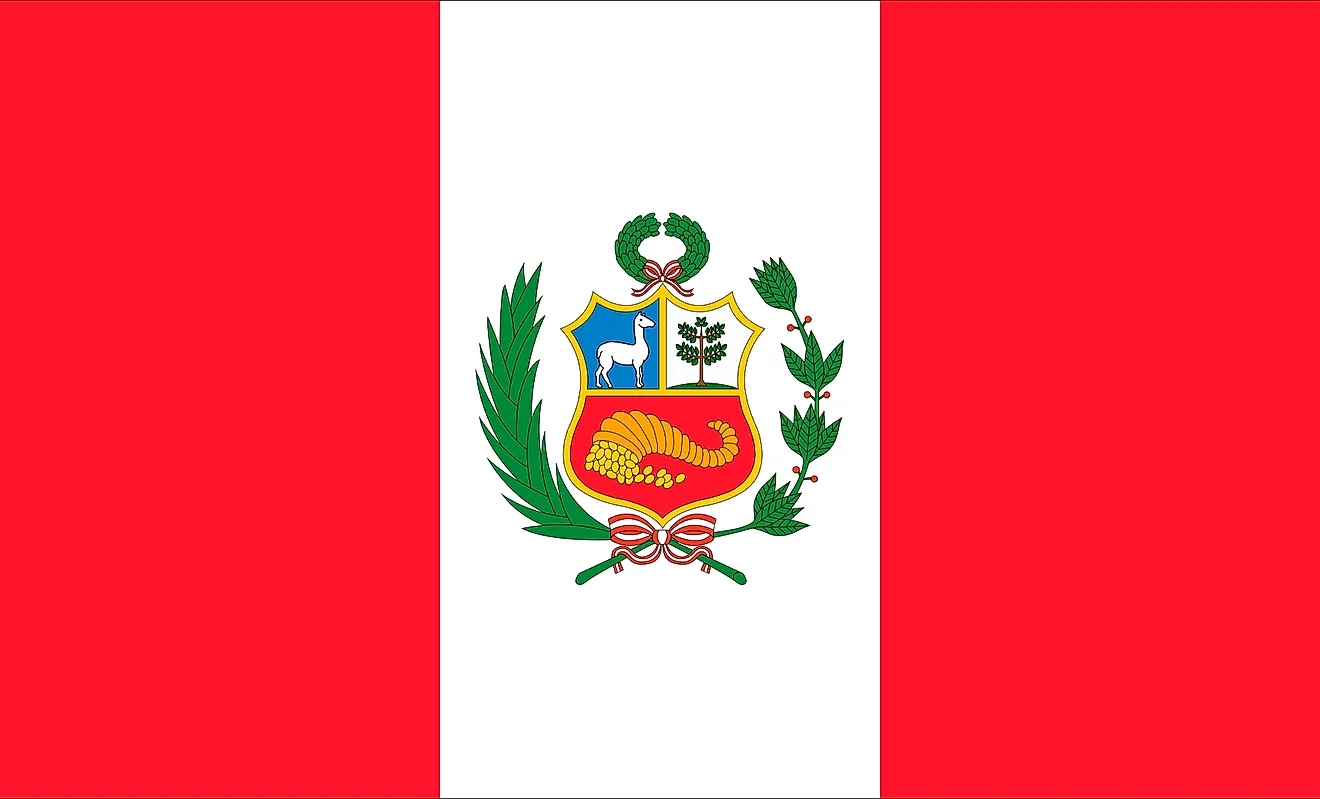
The current state flag of Peru was officially adopted on February 25, 1825, and modified in 1950. The flag consists of three equal, vertical bands of red (hoist side), white, and red with the coat of arms centered in the white band. The coat of arms features a shield bearing a vicuna (representing fauna), a cinchona tree (the source of quinine, signifying flora), and a yellow cornucopia spilling out coins (denoting mineral wealth); red recalls blood shed for independence, white symbolizes peace
The colors are said to symbolize the Incas and their lasting impact on the country. Also, red and white are the colors chosen by Jose de San Martin, The Liberator. White symbolizes peace and purity, while red represents the blood spilled in the fight. The national flag has a height to length proportion of 2:3.
History Of The Peruvian Flag
The first flag of Peru was flown in 1820. The colors red and white were chosen in honor of Jose de San Martin, who helped lead the struggle for independence from Spanish rule in Argentina, Chile, and Peru. It is a reference to San Martin’s sight of a flock of flamingos taking flight upon his arrival in Peru. Unlike Peru’s current flag, however, the design was different. It consisted of two red and two white triangles with a coat of arms at the center. A new design was flown two years later, consisting of two horizontal red stripes at the top and bottom with a white stripe in the center, all of equal length. In the center of the flag was a red sun, the old emblem of the Inca Empire. But because this design was too similar to that of the Spanish flag, the flag was redesigned again. This time, the stripes were vertical, though the Inca-inspired red sun remained in the center.
The current national flag of Peru was finally established on February 25, 1825. It omitted the red sun in favor of a new coat of arms at its center, inside the white stripe. The coat of arms consists of a wreath made of palm and laurel branches, framing a shield that is divided into three parts. One part features a vicuna, a camel-like creature that is closely related to the llama and alpaca. The vicuna is supposed to represent Peruvian fauna, and also stands for freedom, national pride, and heroism. The second part of the shield features a cinchona tree, from which many traditional remedies are made. The third, bottom part of the shield features a cornucopia overflowing with silver and gold coins, representing Peru’s mineral wealth.
Variants Of The Peruvian Flag
The State Flag
The flag most commonly flown during national ceremonies, including events in which government officials such as the president are present, is known as the Pabellon Nacional. It contains the aforementioned red and white stripes with the previously described shield from the coat of arms at the center. The shield is flanked on both the right and left by smaller flags resembling the civil ensign (see below), with a wreath appearing at the top. This flag is also commonly displayed in government offices.
Civil Ensign
The civil flag, known as the Bandera Nacional, literally meaning national flag, is the one commonly flown by members of the public. It basically consists of the flag minus the coat of arms, which were removed from this variant by military dictator, General Manuel A. Odria, in 1950.
War Flag
The so-called Bandera de Guerra is used by Peru’s police and military. It very much resembles the national flag, though the coat of arms appears slightly different.
The Naval Jack
The Peruvian Naval Jack is different from all the other flag variants in that it is designed, not with stripes, but with a white square on a red field, and the coat of arms at the center. It is flown by the country’s battleships.
Symbols of Peru
National Coat of Arms of Peru

The Peruvian coat of arms is largely dominated by the central shield, which is divided into three sections. The upper left section shows the national animal of Peru, the Vincuña. The upper right section shows the cinchona tree. Cinchona trees are used to make quinine, which is a powerful anti-malaria drug. The lower section shows a cornucopia full of coins. These coins represent the mineral wealth of the country. The Holm Oak Civil crown above the shield signifies victory and glory.
National Anthem
- Anthem Title: “Himno Nacional del Perú” (National Anthem of Peru)
- Music Composer: José Bernardo Alzedo
- Lyricist: José de la Torre Ugarte
- Date of Adoption: 1821
“Himno Nacional del Perú” is the national anthem of Peru. The music of the anthem have been composed by José Bernardo Alzedo. The lyrics of the anthem have been written by José de la Torre Ugarte. The anthem was officially adopted in 1821.
“Himno Nacional del Perú” (Spanish)
Coro:
Somos libres
seámoslo siempre, seámoslo siempre
y antes niegue sus luces
sus luces, ¡sus luces el Sol!
Que faltemos al voto solemne
que la patria al Eterno elevó,
Que faltemos al voto solemne
que la patria al Eterno elevó.
Que faltemos al voto solemne
que la patria al Eterno elevó.
I (former official sung verse)
Largo tiempo el peruano oprimido
la ominosa cadena arrastró
condenado a una cruel servidumbre
largo tiempo, largo tiempo,
largo tiempo en silencio gimió.
Mas apenas el grito sagrado
¡Libertad! en sus costas se oyó
la indolencia de esclavo sacude
la humillada, la humillada,
la humillada cerviz levantó,
la humillada cerviz levantó, cerviz levantó...
Coro
II
Y al estruendo de broncas cadenas
que escucharon tres siglos de horror,
de los libres al grito sagrado
que oyó atónito el mundo, cesó.
Por doquier San Martín inflamado,
libertad, libertad, pronunció,
y meciendo su base los Andes
la anunciaron, también, a una voz.
III
Con su influjo los pueblos despiertan
y cual rayo corrió la opinión;
desde el istmo a las tierras del fuego,
desde el fuego a la helada región.
Todos juran romper el enlace
que Natura a ambos mundos negó,
y quebrar ese cetro que España
reclinaba orgullosa en los dos.
IV
Lima cumple su voto solemne,
y, severa, su enojo mostró,
al tirano impotente lanzando,
que intentaba alargar su opresión.
A su esfuerzo saltaron los grillos
y los surcos que en sí reparó,
le atizaron el odio y venganza
que heredó de su Inca y Señor.
V
Compatriotas, no más verla esclava.
Si humillada tres siglos gimió,
para siempre jurémosla libre,
manteniendo su propio esplendor.
Nuestros brazos, hasta hoy desarmados
estén siempre cebando el cañón,
que algún día las playas de Iberia
sentirán de su estruendo el terror.
VI (Former fifth verse)
Excitemos los celos de España
pues presiente con mengua y furor
que en concurso de grandes naciones
nuestra patria entrará en parangón.
En la lista que de éstas se forme
llenaremos primero el reglón
que el tirano ambicioso Iberino,
que la América toda asoló.
VII (Present Official sung verse)
En su cima los Andes sostengan
la bandera o pendón bicolor,
que a los siglos anuncie el esfuerzo
que ser libres, que ser libres
que ser libres por siempre nos dio.
A su sombra vivamos tranquilos,
y al nacer por sus cumbres el Sol,
renovemos el gran juramento
que rendimos, que rendimos
que rendimos al Dios de Jacob,
que rendimos al Dios de Jacob, al Dios del Jacob...
Coro
National Anthem of Peru
Chorus:
We are free!
May we always be so, may we always be so!
And may the Sun renounce its light,
its light, its light,
Before we break the solemn vow
which the homeland lifted up to the Eternal,
Before we break the solemn vow
which the homeland lifted up to the Eternal.
Before we break the solemn vow
which the homeland lifted up to the Eternal.
I (former official sung verse)
For a long time the oppressed Peruvian
the ominous chain he dragged
Condemned to a cruel servitude
for a long time, for a long time
for a long time he quietly moaned
But as soon as the sacred cry
Freedom! in its coasts was heard
the slaves' indolence shakes
the humiliated, the humiliated,
the humiliated neck raised up,
the humiliated neck raised up, neck raised up...
Chorus
II
Now the roar of rough chains
that we had heard for three centuries of horror,
from the free, at the sacred cry
that the world heard astonished, ceased.
Everywhere the inflamed San Martin
"Freedom", "Freedom" he pronounced;
and the Andes, rocking their base,
announced it as well, in unison.
III
With its influx the peoples woke up,
and like lighting ran the opinion;
from the Isthmus to the Tierra del Fuego,
and from Tierra del Fuego to the icy regions.
Everyone vowed to break the link
that Nature denied to both worlds,
and break the sceptre that Spain
had reclined, proudly, on both.
IV
Lima fulfilled this solemn vow,
and, severe, its anger showed
by throwing out the powerless tyrant,
who had been trying to extend his oppression.
On its endeavor the shackles cracked,
and the furrows that it had repaired in itself
stirred up its hatred and vengeance,
inherited from its Inca and Lord.
V
Countrymen, may we see it a slave no more.
If for three centuries it moaned, humiliated,
forever may we swear it'd be free,
maintaining its own splendor.
Our arms, until today unarmed,
be they always readying the cannon,
that some day the beaches of Iberia
will feel the horror of its roar.
VI (Former fifth verse)
May we arouse the jealousy of Spain
since it has a premonition, with want and furor,
that in a contest of great nations
our country will enter in comparison.
On the list formed by these
we shall fill the line first,
ahead of the ambitious Iberian tyrant,
who devastated all of America.
VII (Present Official sung verse)
On its summits may the Andes sustain
the two-color flag or standard,
may it announce to the centuries the effort
that being free, that being free
that being free gave us forever.
Under its shadow may we live calmly
and, at birth of the sun in its summits,
may we all renew the great oath
that we rendered, that we rendered
that we rendered to the God of Jacob,
that we rendered to the God of Jacob, the God of Jacob...
Chorus
The Currency of Peru is the Peruvian Sol
The currency of Peru is known as the sol. The sol substituted the Peruvian inti in 1991. The word sol is derived from Latin (solidus) although the word also refers to sun in Spanish language. The currency is portioned into 100 parts called centimos (cents). After the currency introduction in 1991, the currency was commonly known as Nuevo until the Peruvian congress pioneered the renaming of the currency just to sol.
Coins
At the moment, the coins in circulation were produced and adopted in 1991 in denominations of 1, 5, 10; 20 and 50 centimos plus 1 sol. Retailers doing cash transactions are obliged to use ten centimos or to go up to nearest five. Electronic transactions and billings are processed in the same equivalence. An aluminum 5 centimo coin was minted and adopted in 2007. All the coins have a portrait representing the Coat of Arms of Peru with an image of central reserve bank of Peru at the obverse side of the coins. The denomination values are represented at the back side of each coin.
Banknotes
Peruvian bank notes were circulated in 1990 in denominations of 10, 20,50, and 100 soles. A bank note of 200 soles was later adopted in 1995. All the denominations of notes are uniform in size. A 10 soles note as introduced into circulation in 1991. The 10 soles note is green in colour with a portrait of Jose Quinone’s Gonzales.
The 20 soles note is orange with an image of Raul porras and a Huaca del dragon. The 50 soles note is brown and contains an image of Abraham valdelomar. The 100 soles note is blue with an image of Jorge Basadre and the national library of Peru. The 200 soles note, produced in 1995, is pink in colour while the one produced in 2011 is gray in colour.
Inflation and Value
Since its introduction, sol has maintained a low inflation rate of less than 1.5%, being ranked the lowest inflation in the entire Latin America. The currency has also reserved a strong stable exchange rate of 2.2 to 3.66 at each United States dollar.
Historical Currencies of Peru
The Peruvian sol replaced the Peruvian inti in 1991. Inti was the currency of Peru between 1985 and 1991 and was replaced due to the country's bad economy an hyperinflation. It also replaced the sol in 1985 for the same reasons it was replaced in 1991. Inti was subdivided into 100 centimos. The coins and notes were introduced in 1985 in various denominations, including 1, 5, 10, 20 and 50 centimos coins and 10, 50, and 100 intis notes. All coins featured Miguel Grau, while banknotes featured several personalities depending on the denomination. Some of these personalities include Ricardo Palma (5 intis), Nicolás de Piérola (50 intis), Andrés Avelino Cáceres (1,000 intis), and César Vallejo (10,000 intis)

